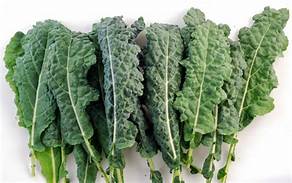Importance of well balance diet
All food contains all of the nutrients we need to be healthy, it is necessary to eat various foods in sufficient amounts. A good diet will include many different foods, and sufficient in quantity and quality to meet an individual’s need for food energy and other micro nutrients.
ORANGES AND TANGERINES
Typical serving size:
1 medium orange (131 g), 1 medium tangerine tangerine (109 g) or ½ cup juice (4 fl oz or 125 mL)HOW THEY HARM
Allergies
Tooth enamel erosion Drug interactions Canker soresWHAT THEY HEAL
Cancer, including thyroid cancer High blood pressure High cholesterol Stomach upset Inflammation Weight gain Oranges and tangerines are usually associated with vitamin C, and for good reason: One medium- size orange provides about 70 mg, more than 90% of the Recommended Dietary Allowance (RDA) for womenOranges contain smaller amounts of other vitamins and minerals, such as thiamine and folate
The fruit is also a good source of potassium
WARNING
!FOOD-DRUG INTERACTION
Orange juice, as well as grapefruit and apple juice, may block the effects of certain drugs, such as the anticancer drug etoposide; beta-blockers to treat high blood pressure; cyclosporine; and some antibioticsSpeak to your doctor about any concerns
A half-cup of freshly squeezed juice provides roughly the same amount of nutrients found in the fresh fruit, but much of the pulp and membranes are strained out of most commercial brands so you lose out on most of the fiber and flavonoids
Tangerines are low in calories (about 35 calories in a medium fruit) and are richer in vitamin A (in the form of beta-carotene) than any other citrus fruit
A medium-size tangerine contains high levels of vitamin A as well as 130 mg of potassium
Tangerines, along with clementines and satsumas, are actually types of mandarin oranges
These sweet citrus fruits with loose-fitting skins originated in China, but they are now grown in many parts of the world
As they moved into other tropical and subtropical areas, the original mandarin oranges were crossed with other citrus fruits to produce a variety of hybrids, including clementines, tangelos and tangors
Health Benefits
Limits growth of tumorsOranges are powerful cancer fighters
Vitamin C is an antioxidant that protects against cell damage by the free radicals produced when oxygen is used by the human body
Additionally, oranges contain rutin, hesperidin, and other bioflavonoids, plant pigments that may help to prevent or retard tumor growth
Beta-cryptoxanthin, a carotenoid in oranges and tangerines, may help prevent colon cancer
Furthermore, nobiletin, a flavonoid found in the flesh of oranges, may have anti-inflammatory actions and tangeretin, the flavonoid found in tangerines, has been linked in experimental studies to a reduced growth of tumor cells
May decrease risk of thyroid cancer
Results of a study in the Republic of Korea suggest that high consumption of raw vegetables, persimmons, and tangerines may decrease thyroid cancer risk and help prevent early-stage thyroid cancer
Decreases blood pressure
According to a French study, orange juice can help lower blood pressure: Researchers believe it is due to the effects of hesperidin, a flavonoid that comprises 90% of total flavonoids in orange juice
Oranges also have good amounts of potassium, which help control blood pressure by lessening the effects of sodium
To that end, the American Heart Association recommends oranges and orange juice as foods that are potassium-rich
Lowers cholesterol
Oranges contain a fair amount of pectin in the membranes between the segments of the fresh fruit
Pectin is a soluble dietary fiber that helps control blood cholesterol levels
Relieves digestive distress
The Chinese use tangerines to help settle digestive upsets and alleviate nausea, while in France, the fruit is given to children to relieve indigestion and hiccups
Fights inflammation
A medium-size tangerine fulfills about 30% of the adult Recommended Dietary Allowance (RDA) for vitamin C
This antioxidant helps to prevent harmful free radicals that are produced by the body’s digestive process and by exposure to tobacco smoke, radiation, and other environmental toxins
QUICK TIP:
Eat the pith Eat the orange with the pith, the spongy white layer between the zest and the pulpAlthough bitter, the pith stores a good amount of the fruit’s fiber and antioxidant plant chemicals
Helps with weight loss
Oranges are low in calories—one orange contains approximately 60
When you eat the whole fruit instead of drinking the juice, you also benefit from the fiber content, which may help you reach satiety faster than other low-fiber foods
Health Risks
Allergic reactionsOrange peels may be treated with sulfites, which can trigger serious allergic reactions in susceptible people
Also, orange peels contain limonene, an oil that is a common allergen
Many people who are allergic to commercial orange juice, which becomes infused with limonene during processing, find they can tolerate peeled oranges
Tooth enamel erosion
According to a study from the University of Rochester, orange juice reduced tooth enamel hardness by 84% in those who drank it every day for 5 days
Researchers attribute it to the high acidity of orange juice
Canker sores
Oranges and tangerines, like other citrus fruits, can make these painful mouth sores even worse




